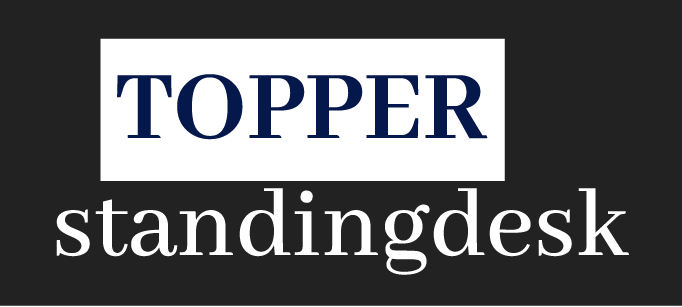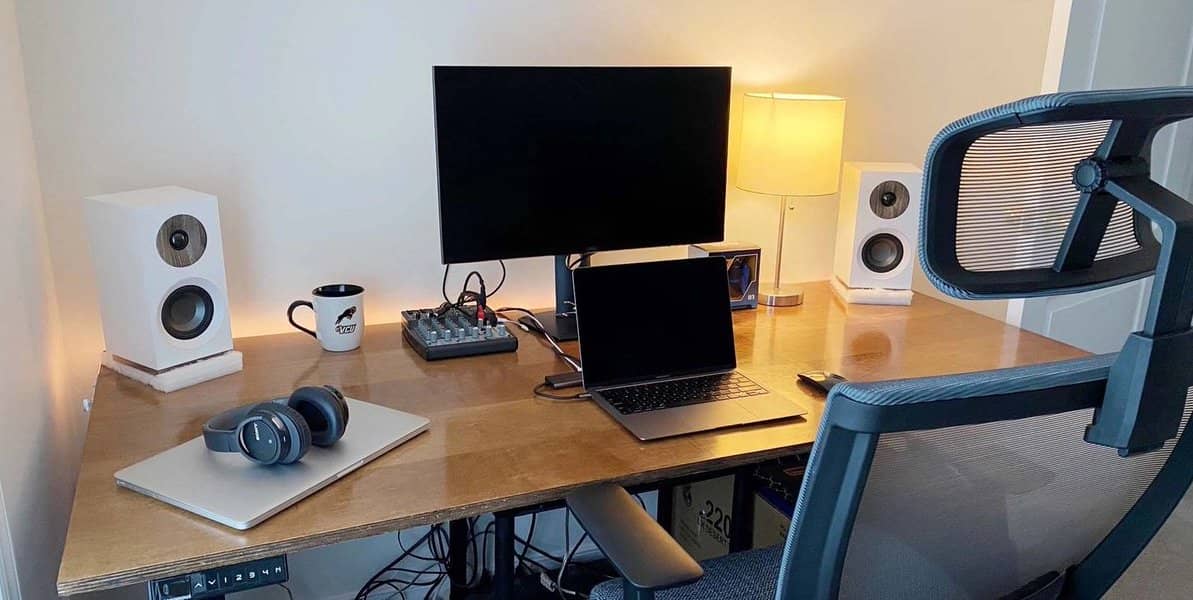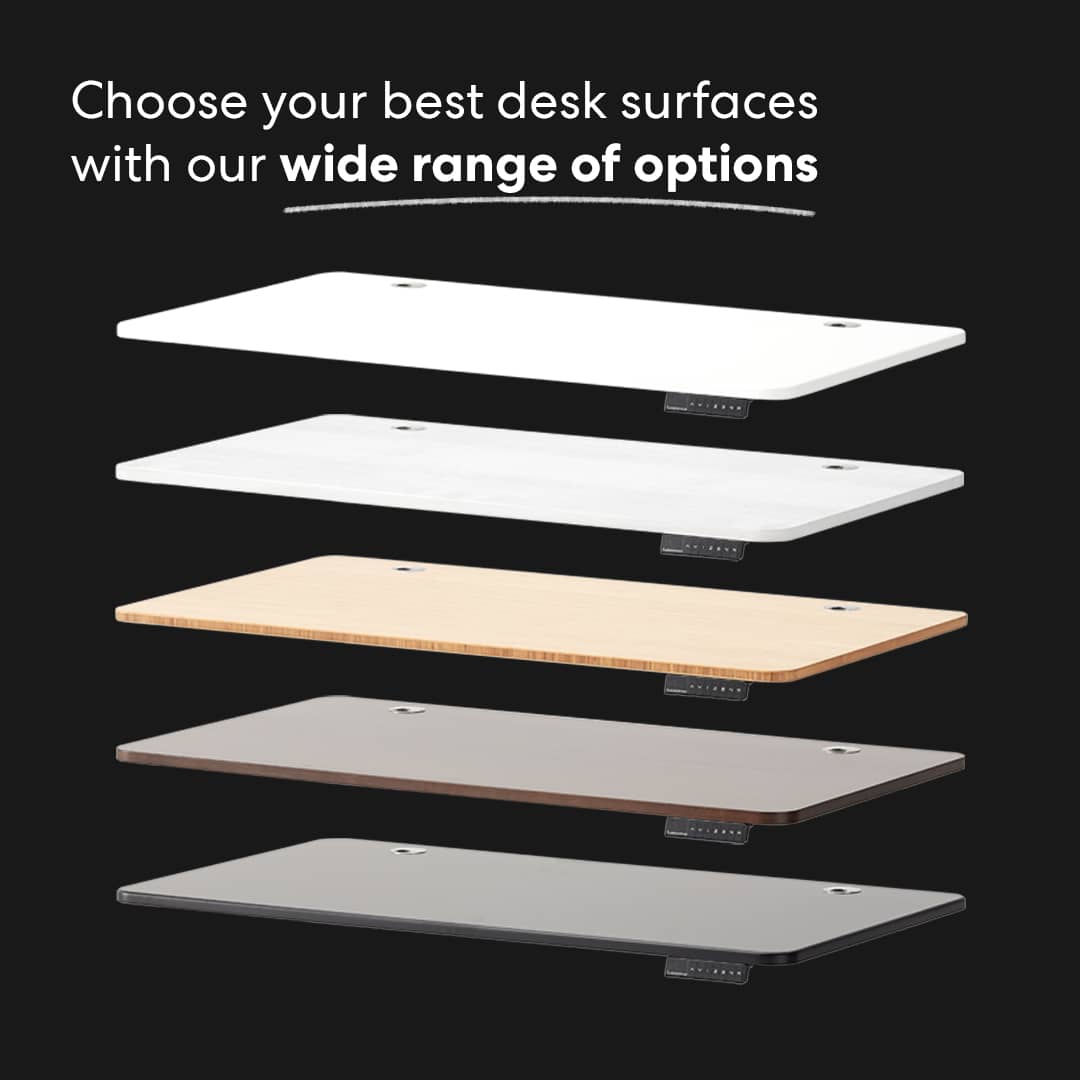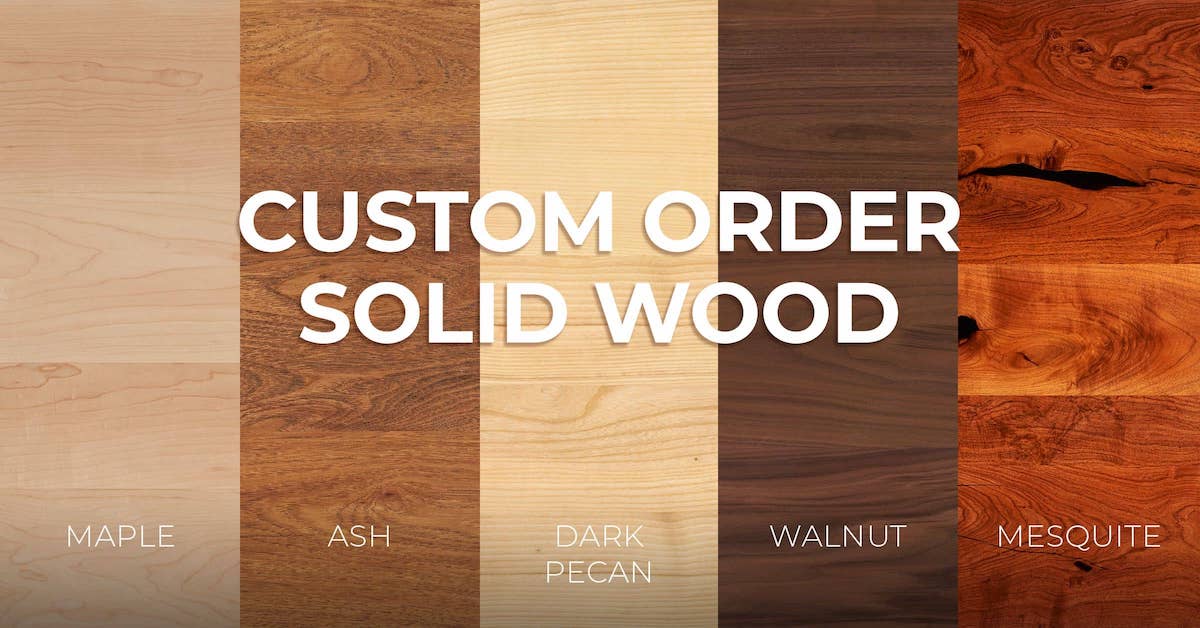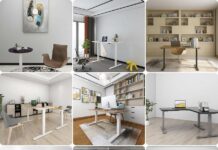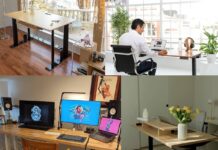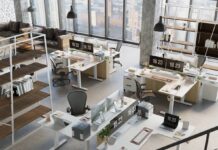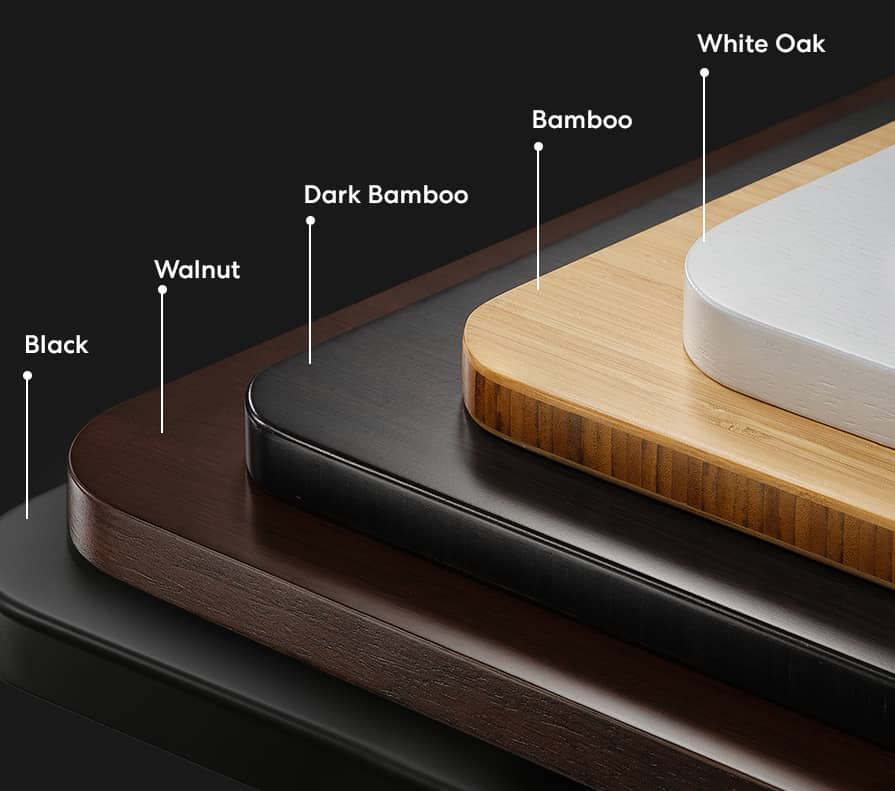
The tabletop may not seem as important as the motor. But you are in direct contact with the desk surface every single time. That’s why it’s as important as the motor.
We will discuss in the article several types of material used for tabletops. This will help you decide on which type of material to get for your standing desk.
Standingdesktopper's pick
Different types of desktop materials
Natural wood
Most people would probably love to get solid wood for their desk. And depending on the tree, each solid wood presents a distinct charm. It can even be an extension from the rustic outdoors. That’s why solid wood desks are definitely a hot pick.
- Cherry wood
The wood from a cherry tree evokes a more sophisticated look. You can get cherry wood in either very deep reddish-brown or light brown. And what’s special about wood is that its color deepens as the day passes and it becomes more defined. Shall we say, it ages with grace?
That’s what makes cherry woods a very popular choice, especially among the elite. With its distinctive grain, you can tell that it’s expensive. Moreover, there are different types of cherry trees. So it presents a larger pool of choices too.
Since the middle ages, its market value hasn’t changed. Everyone still seems to have their eye on a cherry hardwood.
What you might not like about it? Aside from being really expensive, it can darken a room due to its deep tint.
- Maple wood
Maple wood comes in a light brown or reddish-brown hue. But compared to cherry wood, it has a more subtle red-brown tinge. What makes maple wood standout is that it has an array of dense fibers. It offers several types of wood grains and might just surprise you. From straight, wavy, curled to bird’s eye, the wood grain itself can render the wood more unique.
And the diverse wood grain fibers make the material more natural-looking. It is also moisture resistant and can last for years and years. Maple wood is often stained to make it look similar to the more expensive cherry or mahogany wood. More importantly, it’s also one of the cheaper choices for hardwoods.
- Ashwood
Ashwood is light-colored and perhaps, the easiest to manipulate and shape among all the other types of hardwoods. Albeit it’s easy to mold and cut, it’s still strong lumber. And since it’s more malleable, construction costs are lower too. Hence, this is the more economic choice among the rest.
It also lends a more modern and minimalist look. Whilst hardwoods evoke a more rustic and vintage charm, ashwood is often used in modern constructions.
So if you want solid wood but you are not into the rustic vibe, the modern looking ash wood can be a great option.
- Black walnut wood
This wood is king when it comes to demand. And it’s dark hue even gets lovelier the more you stain it. And like the ashwood, it’s also very easy to machine and quite malleable. But albeit that, the price for this hardwood can be ridiculously high because of the demand.
And that makes It’s one of the more expensive hardwood materials that are still being produced on the market
Rosewood
If you want a rosewood tabletop, you might have to source one from China, Thailand, and Africa. Rosewood is hard to come by these days. It has a deep brown to a red-brown hue that’s similar to cherry wood. The color also depends on age. And depending on the variety, it can also have a purplish hue.
Rosewood is very versatile and used in a lot of items such as guitars, and even rosewood oil. Sadly, it’s on the brink of extinction. That’s why in 2017, there was a ban on harvesting this lumber. There was a spike in demand for rosewood in China, and this led this tree species to almost extinct So if you happen to come across a natural rosewood desktop, expect it to be ridiculously expensive. Or it’s not the real thing
Oakwood
Oakwood has a distinct light brown blonde tint and it can be grainy. This wood is quite popular and commonly used in an array of materials. It can be really heavy, but it’s easy to cut. And you can easily come up with an array of designs and colors as this wood has a variety of finishes.
- Mahogany
Like the cherry wood, mahogany is also very expensive, it’s one of the more premium choices. Mahogany looks classy with its dark brown to reddish tint.
As expensive as it is, it’s also high maintenance. This wood will need regular upkeep because it can harbor a lot of dust and dirt.
- Bamboo
Bamboos are very resilient and can take wear and tear very seriously. These are durable wood but they can also be tough to cut and shape. But it’s lightweight and easier to transport. Also, It’s resistant to humidity, dry air, and temperature making it low maintenance. That’s why bamboo desktops are very popular right now.
The special thing: Chemical-free bamboo desktop, six times more sturdy than normal wood. Resists scratches, water, and insects.
It can evoke a lovely finish without the needed upkeep compared to other types of wood. Termites won’t even dare to nibble on bamboo desks.
- Pine
Pine is a light-colored, lightweight, and more affordable option for desktops. But since it’s softwood, it’s not as durable and can easily show signs of wear and tear.
But it does make up for a shockproof material. And this type of wood evokes a very rustic and barn-like aura.
Solid wood
Made of natural wood, enjoy the warmth of wood; strength and quality are easy to stabilize. Less affected by environmental changes, and less likely to warp or crack. An example of good options is this 72×30″ from VWINDESK: https://www.amazon.com/VWINDESK-Matching-Adjustable-Sustainable-Beautiful/dp/B08BZL6LWJ
How about Solid Wood Texture:
The surface is solid wood, taken from nature, with a beautiful natural texture of solid wood. The inner material is the superposition of poplar and eucalyptus, which is more stable than the straight-joint process of solid wood, not easy to crack, and has good tensile mechanical properties.
Compare the two popular materials for tabletops
| Material | Laminate | Solid Wood |
| Durability | Highly resistant to scratches, stains, and moisture |
Durable and can last with proper care
|
| Price | Less expensive |
Typically more expensive
|
| Aesthetics | Available in a variety of patterns and finishes, but may be less attractive than natural wood |
Natural beauty with unique grain patterns can be sanded and refinished
|
One of the downsides of laminate tabletops is that the edge banding, which is used to cover the exposed edges of the composite material, can sometimes become damaged or peel over time. This can detract from the overall appearance of the tabletop and may require repair or replacement. Conversely, solid wood tabletops typically don’t have this issue as they are made of a single piece of wood.
Reclaimed wood
Reclaimed wood is solid hardwood desktops that have been recycled or repurposed. These can come from old buildings and constructions that are at least a decade old.
These are wooden planks that are put together to form a whole desk. While it may not be a single wood tabletop, it can still evoke that rustic and natural vibe.
However, you have to be careful to discern if it is really reclaimed wood. Authentic reclaimed wood should come from previously used furniture or buildings. Scrupulous manufacturers are labeling some of their desktops as reclaimed wood even if it is not. Instead, they manufacture links of wood from softwoods such as pine or elm and label it as reclaimed.
And you have to understand that reclaimed wood isn’t easy to come across. These are actually more of an antique. They may also carry a hefty cost and are not necessarily economical. You see, a lot of effort, cost, and time was put into recycling them. So the debate is still up if it’s a more eco-friendly or economical choice.
So when you see a lot of manufacturers labeling their desktops as reclaimed wood, think twice. If it comes too cheap, it’s just elm, pine planks, just sinker logs from industrial processing.
Laminated desks
There are several types of laminated desktops. Let’s take a look at a few
- Laminated desks
Laminated desks have a protective layer, more of plastic material over the desk. This renders the decks scratch-free and stain-resistant.
The laminate material can also be made from metal, vinyl wraps, or natural wood veneers. It can also be powder coated. It works in the same way as a clear plastic laminate that gives protection to the paper. And it is processed much in the same way too, it is pressed and bonded together.
The substrate used, or the wood inside is often made from an MDF material. MDF or medium-density fiberboard is made from recycled scrap wood. And there are cheap MDF materials while there are also more expensive ones. The heavier the board, the wood it contains.
That’s why if you compare an MDF wood made in the USA and China, the Asian counterpart is often cheaper since it’s lightweight and has less wood. Thus, it’s not that durable.
Laminated desks are a great option if you can’t afford solid wood. And it requires less upkeep since it already has a protective layer that makes it stain, scratch, and moisture resistant. You just, however, need to be able to discern between a very cheap MDF and a quality one. As a cheaply laminated desk will not last long
- High-pressure laminated desk
This is almost the same as a laminated desk, except that a different protective coating was used. The MDF wood is instead covered with a melamine material. Thus, making the desk also resistant to stain, scratches, and moisture.
These desks are quite cheap, but they are not the prettiest nor the most durable. Still, this type of desk is widely used in a lot of workspaces. These desks often have that rubbery cheap plastic feel.
The edges are banded and can leave the seams susceptible to peeling when used with a harsh cleaner.
- Ergo contoured or 3D laminated desks
A laminate film will be wrapped around the MDF desk, thus giving it a more contoured look. There are no edges and the table looks more pleasing with the round corners.
Expensive 3D laminated desks can also mimic the look of an expensive hardwood desktop. Moreover, 3D laminates offer a variety of colors and can come with wood grain finishes too. Thus, it’s the best option if you want the look of solid wood material but not the upkeep that comes with purchasing solid wood desks.
Fiberboard
A board is made of fine fibers with a smooth surface and cut surface, and the surface is PVC blister treated, so it is less likely to warp or crack. Due to the uniformity of the material, the quality is stable. A unique curved design is more ergonomic.
Chipboard:
A chipboard is a board made by drying small pieces of wood (particles), adding an adhesive, and pressing them at a high temperature.
Summary
There are a lot of desktop materials that you can choose from. How to best decide which to get for your standing desk? You just have to discern which will best suit your circumstances and budget.
- Solid wood tabletops are exceptionally exquisite and classical. But most of these can be expensive. And it comes with high upkeep too. It means you have to regularly treat and clean them. Though if you want a natural wood table but don’t want much maintenance, bamboo would be the best option.
- Laminated desktops, on the other hand, will offer more protection from stains and scratches. But these may not look as lovely as solid wood tops. However, 3D laminate desks are the next best thing. You can get a tabletop that looks like solid wood but without the high maintenance and high cost.
